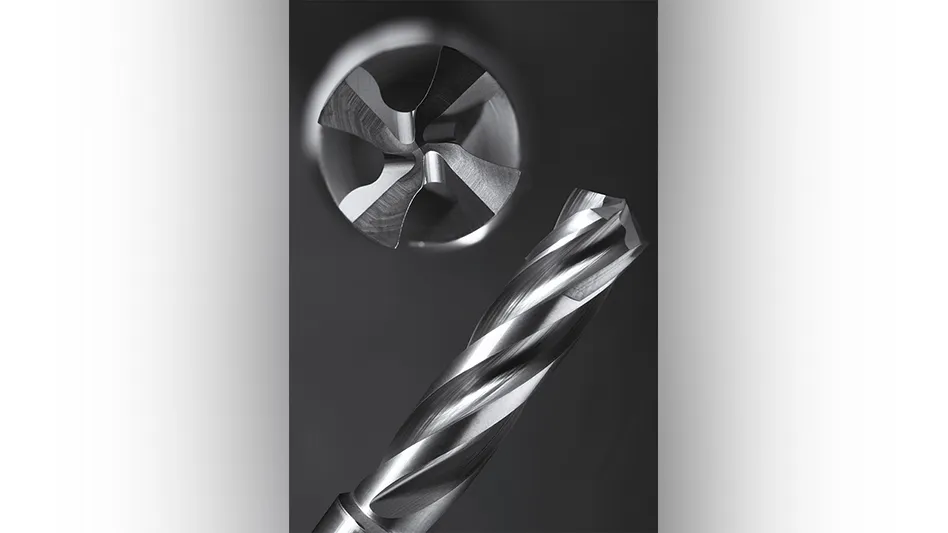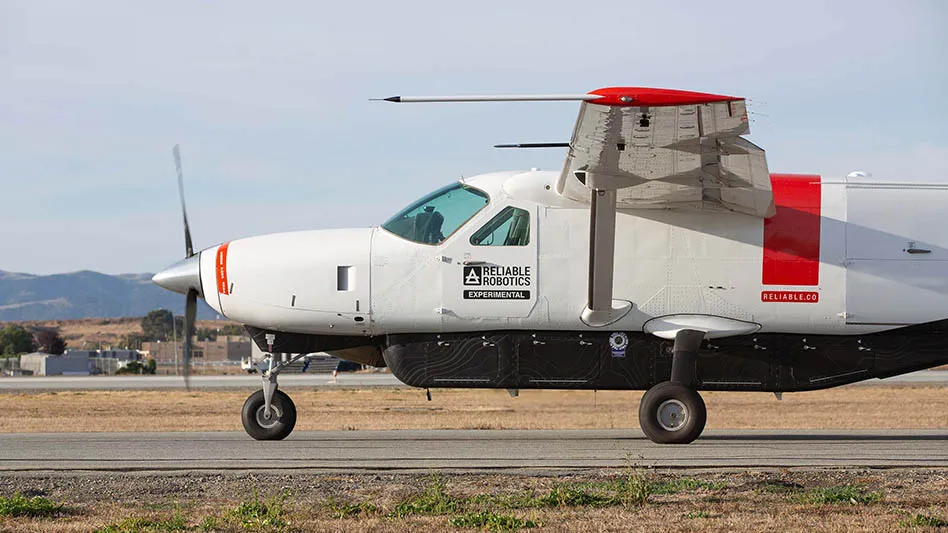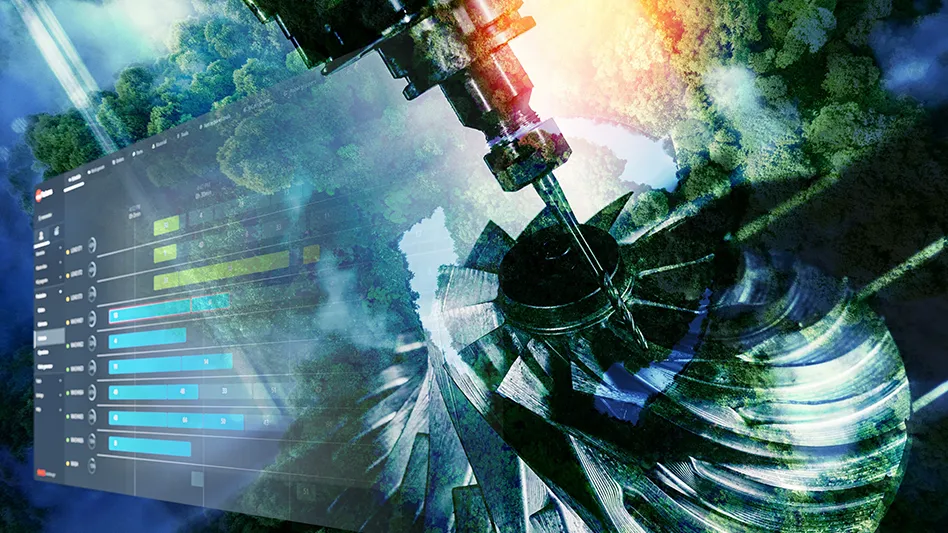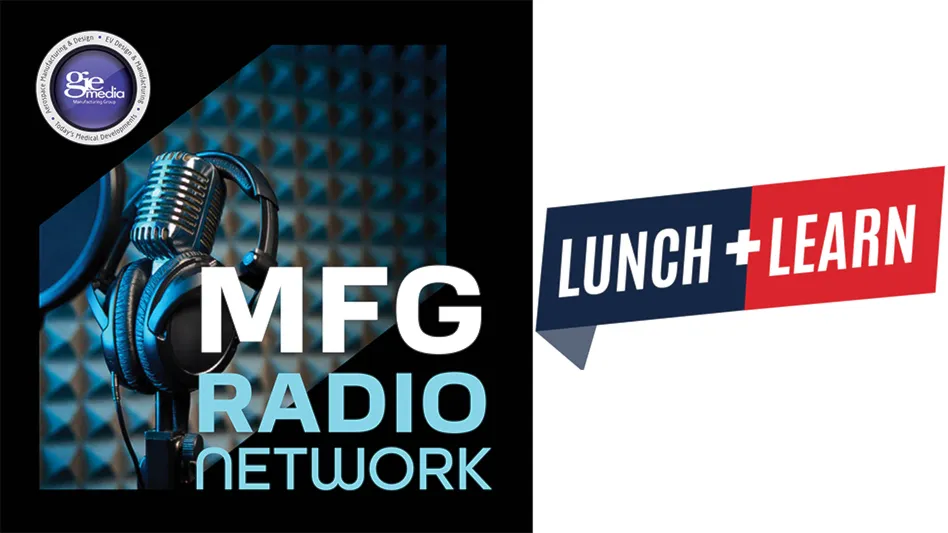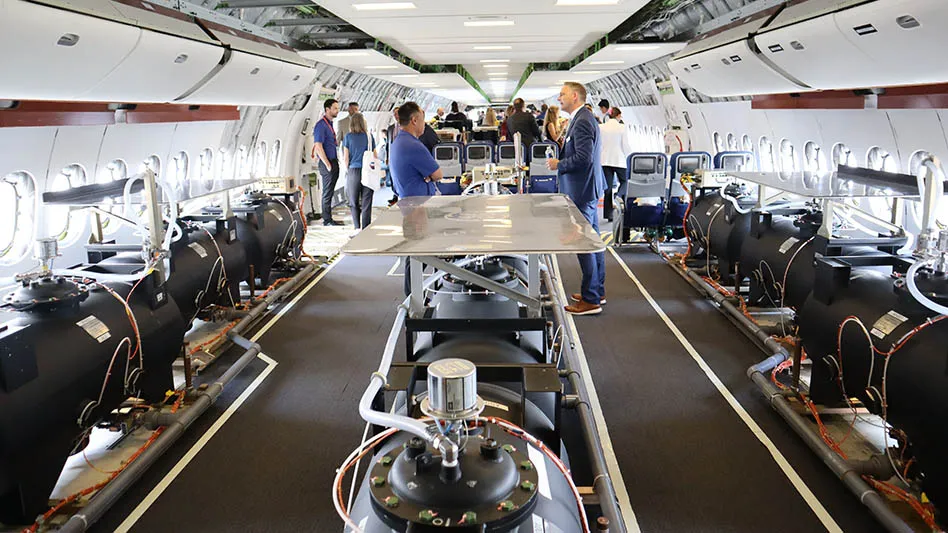
ALL PHOTOS BY THE AUTHOR UNLESS NOTED.
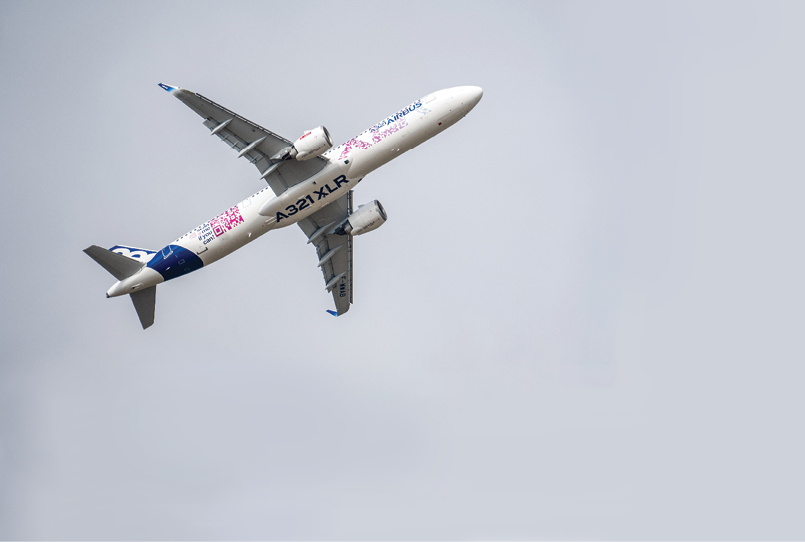
The 54th edition of the International Paris Air Show at Paris le Bourget airport boasted crowds, exhibits, and deals rivaling any previous show – as though the pandemic that canceled the 2021 event never happened.
The official tally lists nearly 2,500 exhibitors, 300 start-ups, and close to 300,000 visitors during the trade show and public days.
The event’s organizers say $150 billion worth of contracts were signed during the show, including the sale of 1,300 aircraft. Global management consulting firm McKinsey and Company calculates the show results bring the total commercial aircraft backlog to 14,300 firm orders worth an estimated $1.8 trillion.
Topping the news on the eve of the show was IndiGo, India’s largest airline by market share, placing a firm order for 500 Airbus A320 family aircraft. The agreement sets the record for the biggest single purchase agreement in commercial aviation and takes the total number of Airbus aircraft on order by IndiGo to 1,330, thereby establishing its position as the leading A320 family jetliner customer.
Pieter Elbers, CEO of IndiGo, remarked, “This order strongly reaffirms IndiGo’s belief in the growth of India,” and helps the company fulfill its mission to boost economic growth and mobility in the country.
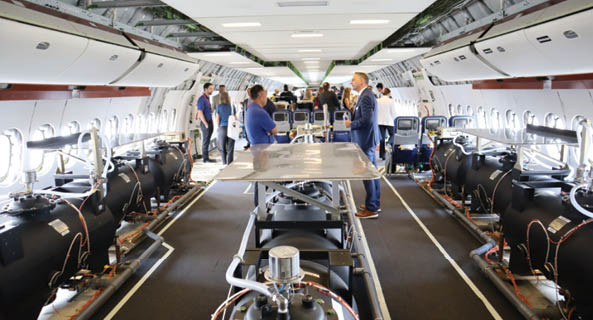
Boeing is also building on its longstanding commitment to India’s commercial aviation and defense sectors. In Paris, Boeing announced new services contracts in India, and finalization of Air India’s order of up to 290 new Boeing jets.
Boeing estimates India will account for more than 90% of South Asia’s passenger traffic in the next 20 years.
Anecdotally, machine tool exhibitors at the show reported increased interest from potential Indian purchasers, reflecting the nation’s commitment to expanding its domestic aerospace manufacturing.
Forecasts
Boeing released its 2023 Commercial Market Outlook (CMO), the company’s forecast of 20-year demand for commercial airplanes and services, on the eve of the Paris Air Show.
With a resurgence in international traffic and domestic air travel back to pre-pandemic levels, Boeing projects global demand for 42,595 new commercial jets by 2042, valued at $8 trillion. Notably, the forecast has airlines replacing about half of the global fleet with new, more fuel-efficient models. That global fleet will nearly double to 48,600 jets, expanding 3.5% per year. The plane maker predicts low-cost carriers will operate more than 40% of the single-aisle fleet in 2042, up from 10% in 2003. New single-aisle airplanes will account for more than 75% of all new deliveries, totaling more than 32,000 airplanes, while new widebody jets will account for nearly 20% of deliveries, or more than 7,400 airplanes. Air cargo carriers will need 2,800 dedicated freighters, including more than 900 new widebodies, as well as narrow-body and widebody aircraft freighter conversions.
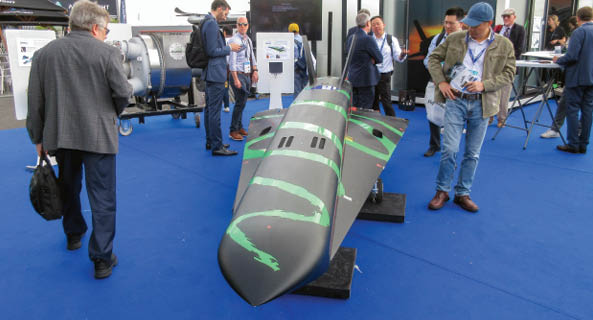
Brad McMullen, Boeing senior vice president of Commercial Sales and Marketing, says, “Our 2023 CMO reflects further evolution of passenger traffic tied to global growth of the middle class, investments in sustainability, continued growth for low-cost carriers, and air cargo demand to serve evolving supply chains and express cargo delivery.”
Boeing also released its Commercial Services forecast, tallying total market worth at $3.8 trillion throughout the next two decades, encompassing digital solutions to increase efficiency and reduce cost, demand for parts and supply chain solutions, maintenance and modification options, and training to support pilot and technician pipelines.
Airbus offers a similar forecast, estimating a demand for 40,850 new passenger and freighter aircraft deliveries during the next 20 years, of which 32,630 will be single aisle jetliners and 8,220 widebody. Demand for freighters is expected to reach 2,510 aircraft throughout the same period, with about 920 of these being newly built.
USA on display
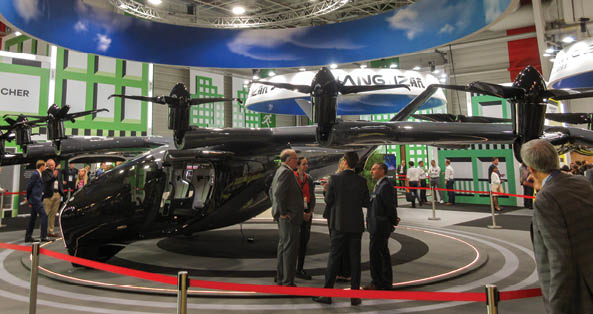
Billed as the largest national presence ever, covering nearly 70,000ft2, the USA Partnership Pavilion showcased more than 300 original equipment manufacturers (OEMs) and suppliers – more than half small- and medium-sized enterprises (SMEs) with fewer than 500 employees. Of the pavilion exhibitors, 90 were new to the market and 110 new to the show – all looking to grow exports by expanding overseas or recruiting international partners.
“We coordinate with the U.S. Departments of Commerce, Defense, State, Transportation, and the U.S. Small Business Administration, to help ensure our SME exhibitors have the funding, market intelligence, and logistical support they need to compete and win at Le Bourget,” says Tom Kallman, president and CEO of pavilion organizer Kallman Worldwide.
The 737-10, the largest member of the Boeing MAX family, joined the new 777-9 in the show’s flying display. The 777-9’s interior is configured as a flight test vehicle, complete with water tanks for adjusting the center of gravity and arrays of flight sensor monitors. The 777X family includes the 777-8 and 777-9 passenger models and the 777-8 freighter.
Boeing aircraft on display in the U.S. Department of Defense corral featured the CH-47F Chinook and AH-64D Apache rotorcraft, and the P-8A Poseidon and KC-46A Pegasus surveillance and refueling aircraft. Other aircraft on display included Boeing’s B-1B Lancer, C-17 Globemaster, and the F-15E Strike Eagle. Lockheed Martin’s F-35A and F-16 fighters were also part of the U.S. military aircraft contingent.
Recurring themes
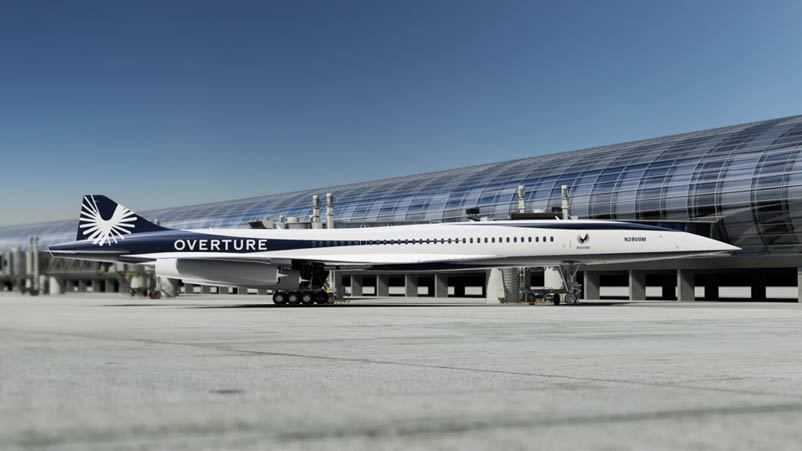
Sustainability was a repeated refrain throughout the show, from press releases to slogans emblazoned on exhibitor chalets, as more global aerospace companies commit to the goal of net-zero carbon emissions by 2050.
Boeing demonstrated its Cascade Climate Impact Model, a data-modeling tool recently made available to provide actionable insights toward the net-zero emissions target. The company also debuted a tool that tracks sustainable aviation fuel (SAF) capacity around the world.
The Paris Air Lab was the premier event for the industry’s commitment to decarbonization. More than 50 companies contributed to the educational exhibition, plus conferences and keynote presentations aimed at all age levels and interests.
Air mobility was on display throughout the show, including a new flagship event, Paris Air Mobility, bringing together many of the world’s players in urban air mobility (UAM).
Start-ups and established groups came to showcase their electric vertical take-off and landing (eVTOL) aircraft, the first time such flying taxi concepts had been presented together, in nearly 11,000ft2 of exhibit space. The vehicles were represented as full-size test articles, mock-ups, and scale models, from the golf-cart-sized EHang to the limousine-like Archer Midnight.
Boeing subsidiary Wisk Aero featured its Generation 6 all-electric autonomous 4-seat air taxi the company plans to certify for commercial passenger operations. Other eVTOL manufacturers included Lilium, Joby, Volocopter, Embraer spinoff Eve, Autoflight, FLYPT, Ascendance Flight Technologies, and Airbus and its CityAirbus Next Generation air taxi.
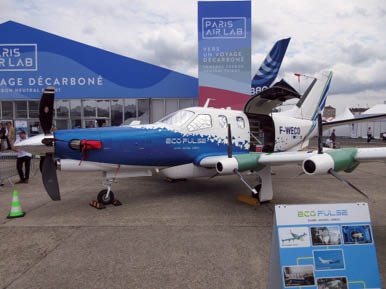
Archer Aviation and Stellantis are scaling manufacturing of Archer’s Midnight eVTOL aircraft with plans for commercialization in 2025. The partnership between Archer and global automaker Stellantis aims to leverage each company’s respective strengths and competencies to bring the Midnight aircraft to market. Archer and Stellantis will manufacture the Midnight at a 350,000ft2 facility, now under construction, capable of producing up to 650 aircraft per year.
The Paris Air Lab area also highlighted initiatives such as the EcoPulse distributed hybrid-propulsion demonstrator aircraft, developed by Daher, Safran, and Airbus with the support of France’s civil aviation research council (CORAC).
VoltAero unveiled the first Cassio 330 electric-hybrid aircraft, introducing a proprietary hybrid propulsion system. The Cassio 330 will be powered by a four-cylinder Kawasaki Motors thermal engine derived from the Japanese company’s motorcycle engine products and combined with electric propulsion for flight safety. The prototype, targeted to perform its maiden flight later this year, will be used to validate the overall airframe configuration and aerodynamics.
Boom Supersonic, the company planning to build a sustainable supersonic aircraft, Overture, revealed advances in its program, including milestones for its Symphony engine. Overture is designed to run on 100% SAF and seeks to fly at 2x the speed of today’s airliners.
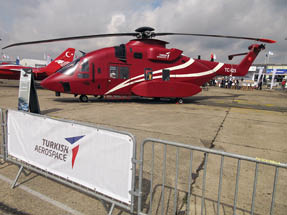
Boom is expanding its engine design partnership with Florida Turbine Technologies Inc. (FTT), a Kratos company, to assemble the initial production units for ground test, flight test, and certification. Boom and FTT shared the engine architecture and additional key specifications for Symphony – the engine is optimized for sustainable supersonic flight and is designed to deliver 25% more time on wing and provide 10% operating cost savings to airline customers. Jupiter, Florida, was announced as the base for initial production.
Symphony’s technical specifications:
- Two-spool, medium-bypass turbofan engine, no afterburner
- 35,000 lb thrust
- Optimized for 100% sustainable aviation fuel (SAF)
- Single-stage 72" fan
- Air-cooled, multi-stage turbine
- 3 low-pressure compressor stages
- 6 high-pressure compressor stages
- 1 high-pressure turbine stage
- 3 low-pressure turbine stages
- FAA Part 33, EASA CS 33 compliant
- ICAO Chapter 14 noise levels
Boom officials also signed structural supplier agreements with Aernnova for Overture’s wings, Leonardo for the fuselage and wing box, and Aciturri for the empennage. The three aerospace leaders join Boom’s growing network of global suppliers that includes Safran Landing Systems, Eaton, Collins Aerospace, Flight Safety International, FTT, GE Additive, and StandardAero.
Boom also revealed Overture’s full systems configuration as the aircraft program advances toward production. Key systems revealed include avionics, flight controls, hydraulics, fuel systems, and landing gear. The company is on track to secure suppliers for most major systems by the end of 2023.
Boom will continue supporting Northrop Grumman on a NASA contract to deliver solutions for the High-Speed Endo-atmospheric Commercial Vehicle Conceptual Design Study and Technology Roadmaps Development program. The study for future R&D will identify technologies to advance commercial supersonic flight efficiency and reduce emissions.
Boom and Northrop Grumman are also continuing collaboration on a special mission variant of Overture, after identifying and investigating use cases that will benefit the U.S. Department of Defense.
Latest from Aerospace Manufacturing and Design
- Garmin earns best supplier recognition from Embraer for 9th consecutive year
- Dillon Manufacturing's Carbinite coating
- #43 Manufacturing Matters - 2024 Spring Aerospace Industry Outlook with Richard Aboulafia
- US operator UrbanLink orders 20 Lilium Jets
- TJ Davies’ retention knobs
- Mazak's VC-Ez 16X for aerospace machining
- India’s IndiGo orders 30 Airbus A350 widebody aircraft
- Techman Robot unveils high-payload AI cobot TM30S at Automate
